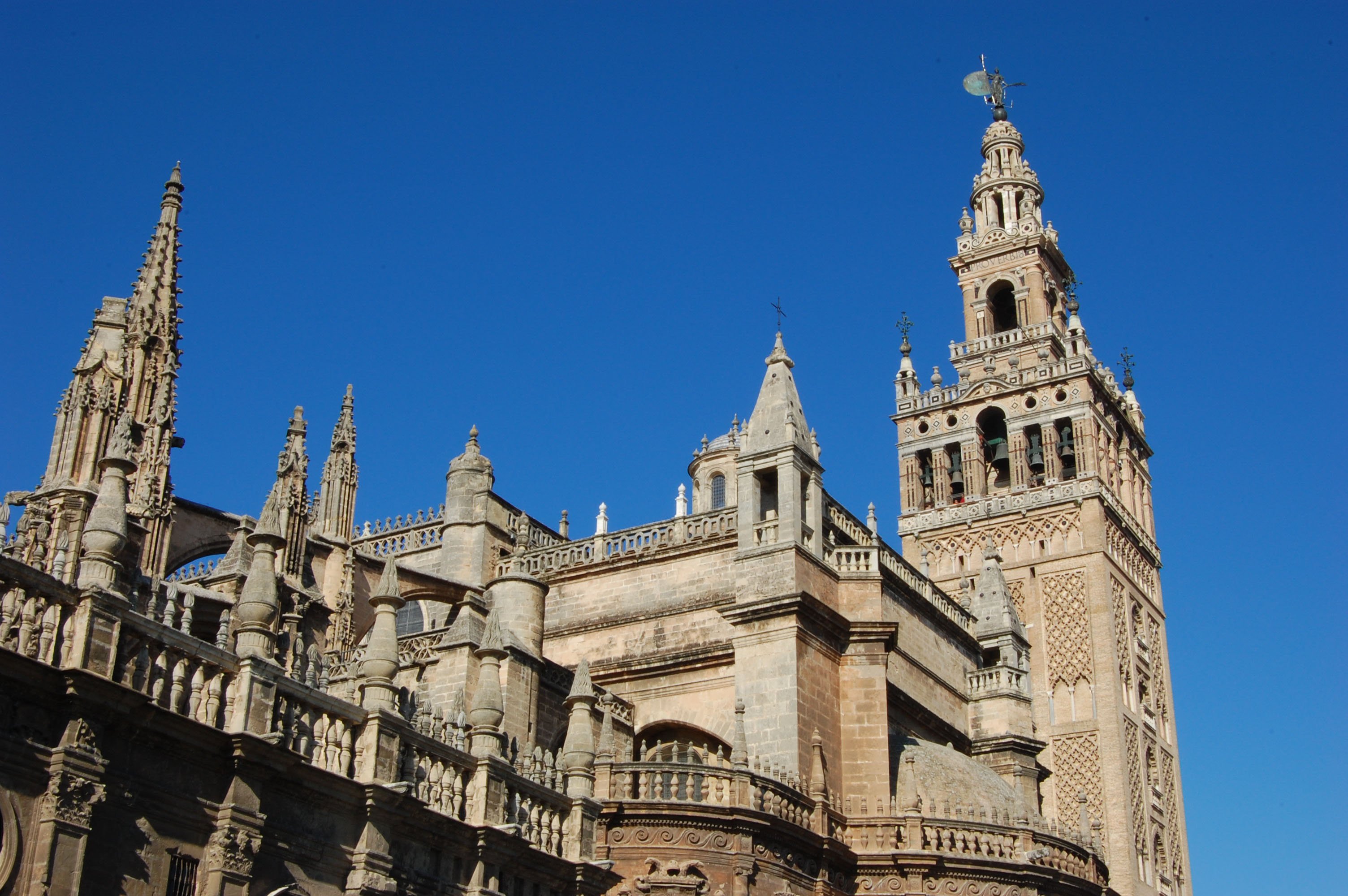
Seville is an impressive city in many aspects, whether it be for its culture, its climate or its gastronomy. However, undoubtedly one of the best surprises for visitors of this Spanish city are the monuments located throughout the historic city centre. In the sections ahead, we will highlight three that are considered mandatory to see during a visit to Sevilla: The Royal Alcázar, the Cathedral and the Torre del Oro (Gold Tower). Don’t miss out!
Royal Alcázar of Seville
The Royal Alcázar, or Royal Palace in English, was declared a UNESCO World Heritage site beginning in 1987 along with the Cathedral and the India Archives building. It is also currently the oldest active Royal Palace in Europe. This monument is worth a visit not only for its great historic importance for the city but also because it is one of the most beautifully artistic and interesting sets of buildings, architecturally speaking in Seville, marrying both the Mudéjar and Renaissance styles.
This fortification was built on a Roman settlement, which holds within each wall and corner a vast number of stories and legends that continue to cultivate interest among visitors. One interesting legend tells the story of King Don Pedro I, The Cruel, who was married to Blanca of Bourbon. He ordered his step brother Don Fadrique to the Real Alcázar (Royal Palace) because he had heard rumours that his wife had been unfaithful with him. When he reached the palace, both began to fight and it ended in the death of the King’s stepbrother, with a dagger. The legend says that the event took place in the “Sala de los Azulejos”, or the Tile Room, and the blood stain can still be seen today on the marble.
For Game of Thrones (HBO) fans, the Royal Alcázar of Seville was used as a location for the fifth and sixth seasons as a backdrop representing the Kingdom of Dorne. Also in Seville, the cast recorded scenes from the aforementioned seasons at Itálica, which was the location for the Dragon pit in King’s Landing and the Pit of Daznak in Meereen.
The Cathedral
A visit to the Cathedral during your trip to Seville is a mandatory stop on your way. It would be a shame to miss out on one of the most unique architectural and artistic treasures in the world. Its walls hold centuries of Sevillian history and undoubtedly, the Cathedral deserves to be visited. It is the largest gothic cathedral in the world, reaching more than 116 metres in length and 76 metres wide as well as being the third largest Christian church after Saint Peter’s in the Vatican and San Paul’s in London.
Just like many other temples located in Andalusia, The Cathedral was built on top of an old Muslim mosque, which explains why it has a rectangular floor, which is more characteristic of basilicas and not cathedrals. It also has a minaret (the Giralda) and a patio (The Patio of the Orange Trees). In fact, when transforming the mosque into the current Catholic church, it needed a bell tower, so the builders took advantage of the old minaret from which the muezzin called the Muslims to prayer, and constructed a bell tower, which is currently the Giralda.
Its origin dates back to the year 1401 and it is said that the Cathedral “breathes” because the vaulting arches expand daily according to the change in temperature and it is this “breathing” which allows the rigidity of the rock to not crack, making the building more secure and durable.
Torre del Oro
The Torre del Oro, or Gold Tower in English, sits on the shores of the Guadalquivir river and is located on Paseo Cristobal Colón (Christopher Columbus Avenue). A spot which is ideal to walk around and discover the views that the city and its river have to offer. Undoubtedly, this site is highly recommended if you are considering visiting Seville and want to see one of its most iconic monuments. The history surrounding the construction of this watchtower begins in 1221, when the last Almohad governor Abu-I-Ula gave the orders for it to be built to defend the city by placing a chain that passed through the river from one end to the other so that the attacking ships could not enter.
The origin of the name “Gold Tower” is attributed to its golden shine reflected from the outer walls onto the Guadalquivir. Literally, the “gold” appearance comes from a mixture of compressed lime and straw that was used to coat the tiles of the tower. However, there is a legend in reference to the name of the tower that states it could be because of the gold that came from South America. However, it is known that the goods arriving from “India” were saved in the Treasure Room in the House of Trade in Seville.
Regarding its structure, the Gold Tower has three different bodies: a lower dodecagonal floor, a hexagonal middle area and lastly a higher circular area and two bronze cannons at the entrance. Currently, it is the Naval Museum where one can view mock-ups, historic documents, engravings, maps and other navigation tools used by the city’s ancestors.
